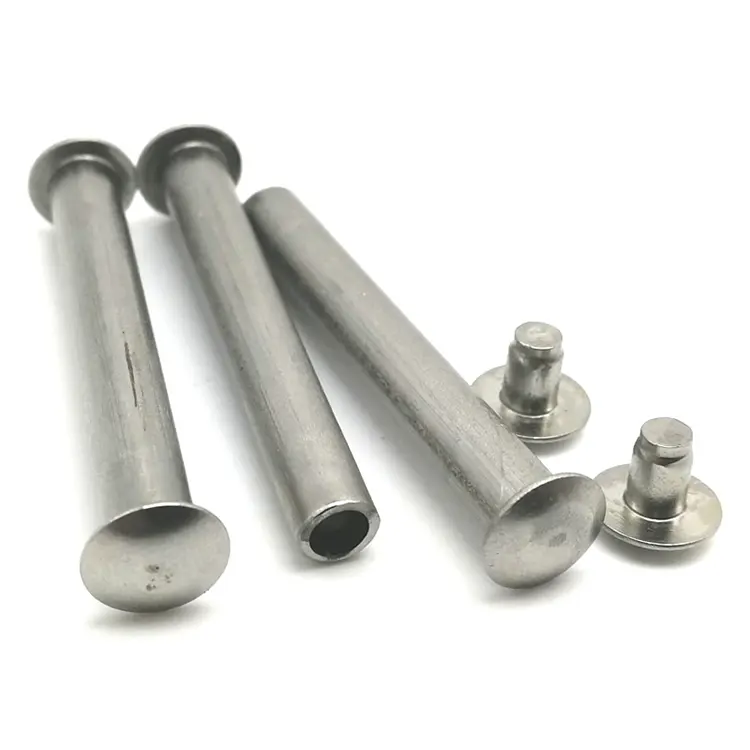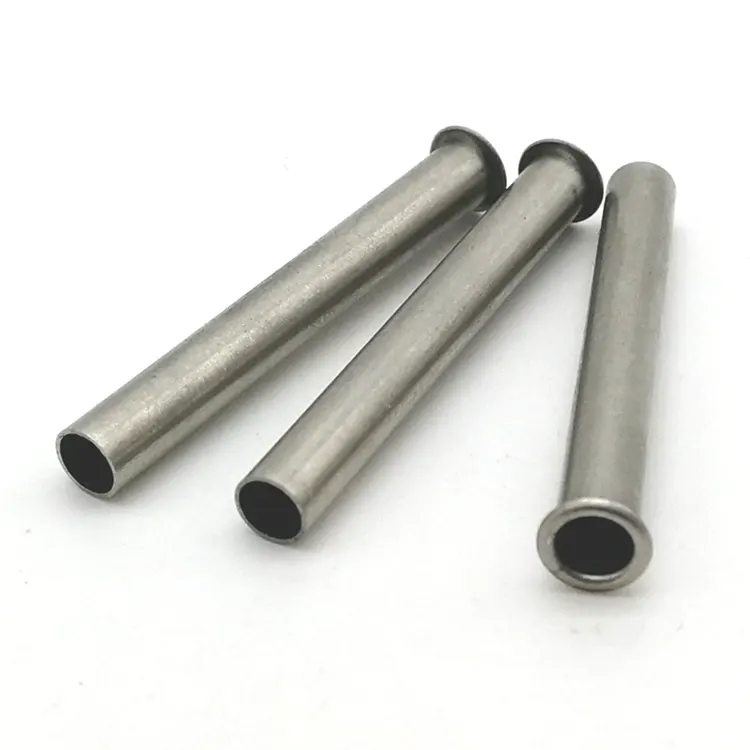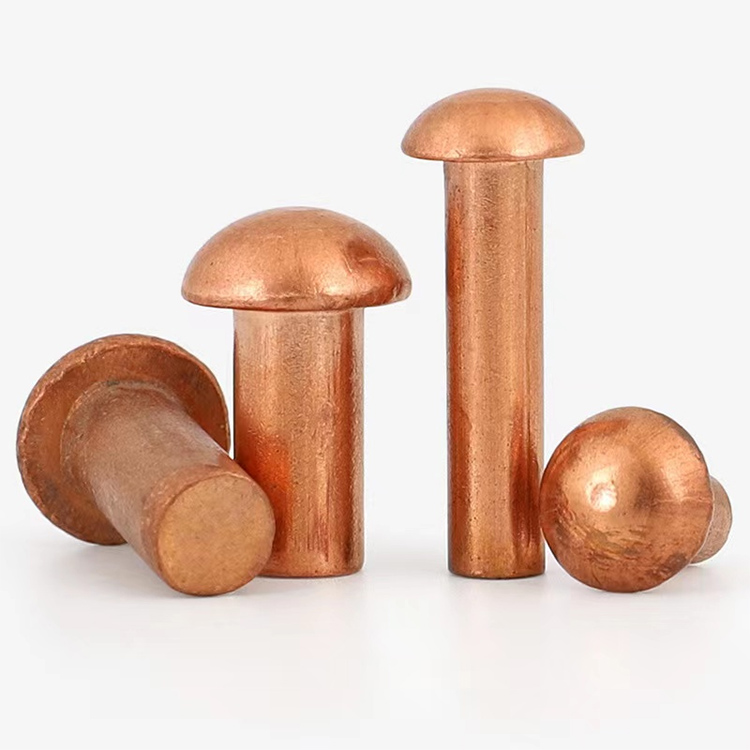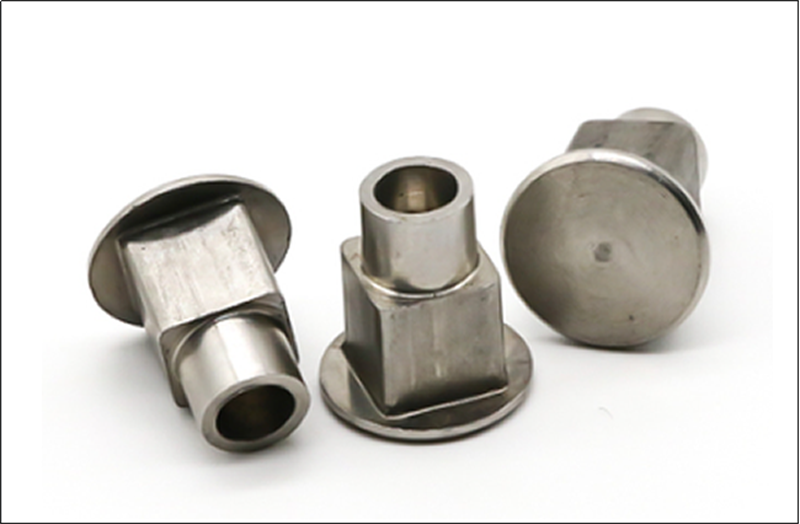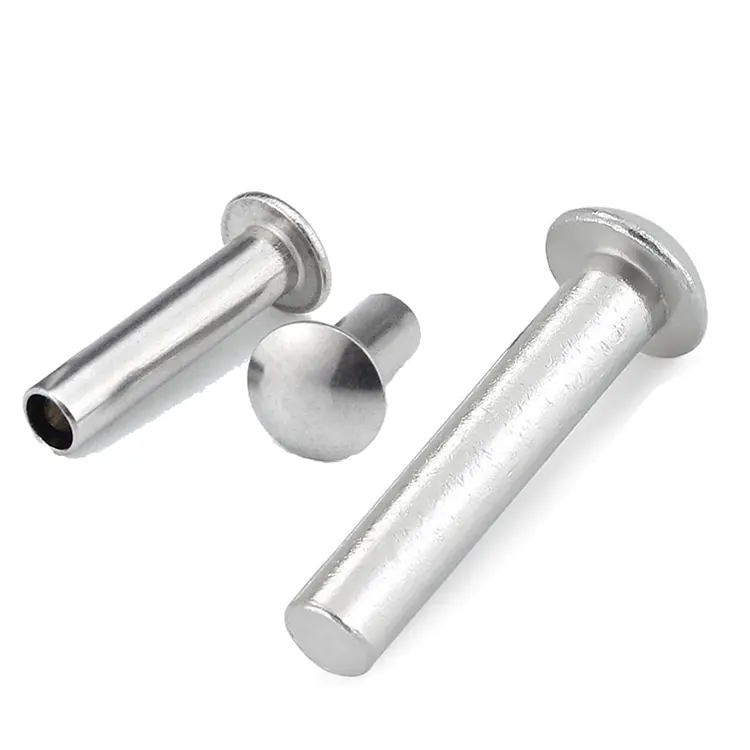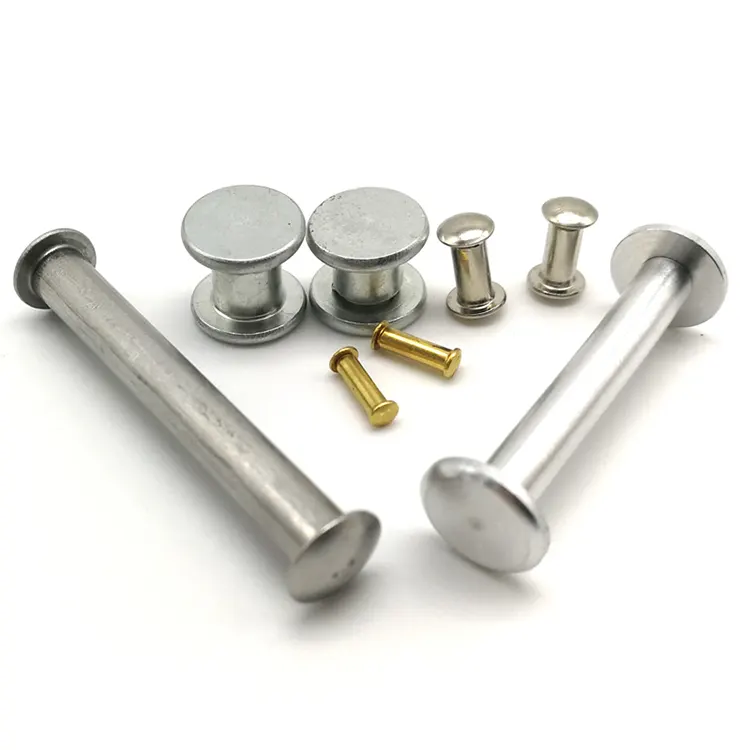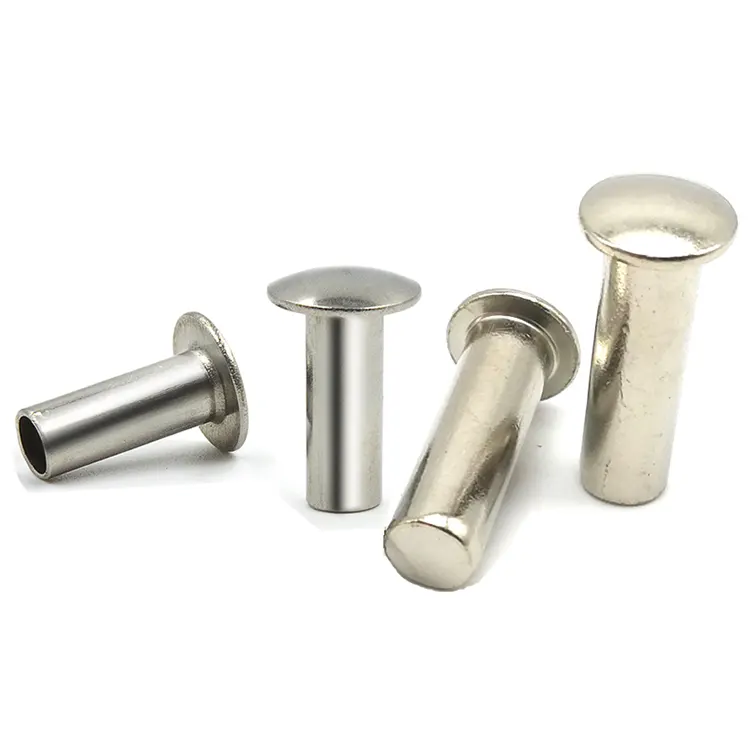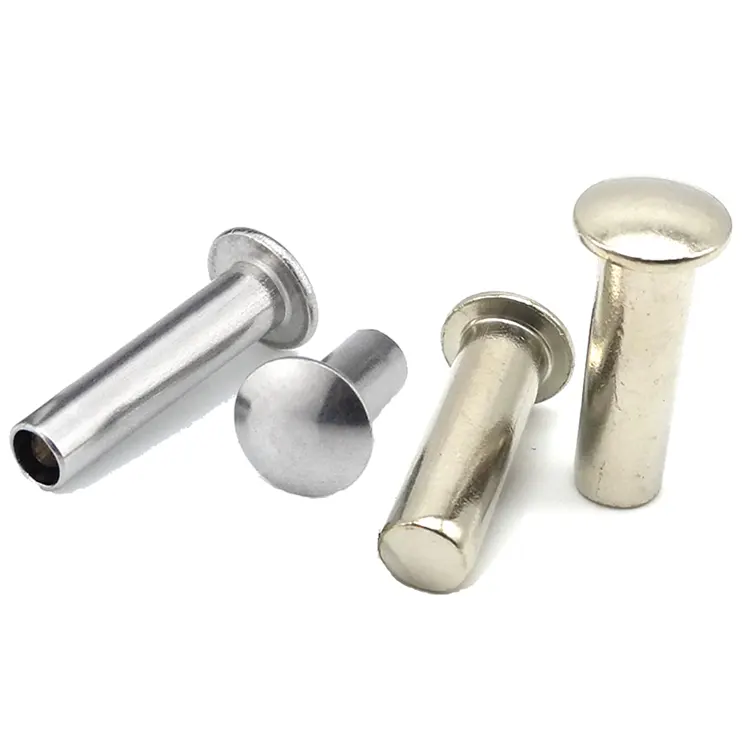Speciale klinknagels
One of Chinese manufacturer of Special Rivets, offering excellent quality at a competitive price, is Notin. Feel free to get in touch.
In the field of mechanical manufacturing and assembly, rivets are a common fastener used to professionally connect two or more parts. According to the degree of standardization, rivets can be divided into two categories: standard rivets and non-standard rivets. The size, shape and material of standard rivets are uniformly specified, while non-standard rivets are customized according to specific needs. The following will introduce the characteristics and applications of non-standard rivets from multiple aspects.
What are non-standard rivets?
Non-standard rivets are also called special rivets. They refer to rivets that do not meet national standards or industry general standards. Their size, material, structure and other parameters are designed and manufactured according to the specific needs of customers. Due to the different connection requirements of different industries and equipment, standard rivets may not meet the requirements of certain special scenarios, so non-standard rivets came into being.
What are the characteristics of special rivets?
(1) Strong customization: Non-standard rivets can be personalized according to factors such as the use environment, stress conditions, and assembly methods to ensure that they perform well in actual applications.
(2) Diverse materials: In addition to common carbon steel and stainless steel, non-standard rivets can also be made of special materials such as aluminum alloy, copper alloy, titanium alloy, etc. to meet different corrosion resistance, strength and weight requirements.
(3) Flexible structure: The structure of non-standard rivets can be adjusted according to needs, such as head shape, stem diameter, length, etc., and can even be designed to be hollow, semi-hollow or other special shapes.
- View as
Universele kopklinknagels
Een universele kopklinknagel is een soort mechanische verbindingscomponent in het klinknagelclassificatiesysteem. De kop heeft een platte boogvormige structuur en is geschikt voor het verbinden van materialen zoals dunne metalen platen, leer, canvas en hout. Dit type klinknagel wordt bevestigd door middel van koude of warme klinknagelprocessen en heeft de voordelen van eenvoudige installatie en kosteneffectiviteit in niet-afgedichte drukdragende omgevingen. Vergeleken met vergelijkbare producten zoals verzonken klinknagels, zijn klinknagels met universele kop geschikter voor het klinken van dunne metalen platen of niet-metalen materialen zoals leer, canvas en hout vanwege hun uitstekende halfronde kopontwerp.
Lees verderStuur onderzoekTweedelige klinknagels
Tweedelige klinknagels bestaan doorgaans uit twee delen: een vrouwelijke klinknagel en een mannelijke klinknagel. De vrouwelijke klinknagel heeft een binnengat aan het ene uiteinde en een vast uiteinde aan het andere uiteinde. De mannelijke klinknagel, als een vaste stofstap klinknagel, past in het binnenste gat van de vrouwelijke klinknagel. Om te gebruiken, bevestigt u eerst de vrouwelijke klinknagel aan een voorwerp, steekt u vervolgens de mannelijke klinknagel in de vrouwelijke klinknagel en slaat u deze op zijn plaats, waardoor de twee voorwerpen met elkaar worden verbonden. Dit ontwerp vereenvoudigt de installatie en biedt tegelijkertijd een betrouwbare verbindingssterkte. Nuote Metals heeft 10 jaar werkervaring met dit soort tweedelige klinknagels, stuur ons gerust uw tekening.
Lees verderStuur onderzoekTrusskopklinknagels
Nuote Metals produceert en verkoopt spankopklinknagels. We zijn gevestigd in Dongguan, China, en we beschikken over meer dan 40 machines voor het produceren van een breed scala aan klinknagelspecificaties en -types. Wij bieden ook op maat gemaakte klinknagels. Trusskopklinknagels zijn een veelgebruikt geklonken onderdeel, bestaande uit een schacht, kop en staart. Ze worden gekenmerkt door een grote, platte kop en een holle of massieve staart, waardoor ze uitstekende afdichtings- en waterdichtingseigenschappen hebben.
Lees verderStuur onderzoekStalen klinknagels met ronde kop
Nuote Metals produceert en verkoopt stalen klinknagels met ronde kop in verschillende afwerkingen, waaronder verzinken, vernikkelen en Dacromet-plating. Klinknagels met ronde kop hebben een halfronde kopvorm en bieden uitstekende trek- en schuifsterkte en zijn bestand tegen zware belastingen. Door het ontwerp met ronde kop kan de klinknagel zich tijdens het verbinden beter aanpassen aan het verbindingsonderdeel, waardoor de verbindingsstabiliteit en afdichting worden verbeterd.
Lees verderStuur onderzoekStalen klinknagels
Klinknagels van koolstofstaal zijn een veelgebruikt mechanisch bevestigingsmiddel dat wordt gebruikt in een grote verscheidenheid aan industriële en alledaagse producten. Hun primaire functie is om twee of meer componenten veilig met elkaar te verbinden, waardoor een stabiele structuur ontstaat. Koolstofstalen klinknagels zijn populair vanwege hun sterkte, duurzaamheid en kosteneffectiviteit. Nuote Metals produceert al meer dan tien jaar koolstofstalen klinknagels. Gevestigd in Dongguan, China, bekend als de 'World's Factory', verwelkomen wij bezoekers van over de hele wereld om ons te bezoeken.
Lees verderStuur onderzoekStalen pankopklinknagels
Stalen platkopklinknagels zijn een veelgebruikt industrieel bevestigingsmiddel dat wordt gebruikt in een breed scala aan toepassingen, waaronder de automobielsector, de luchtvaart en de bouw. Nuote Metals is gespecialiseerd in de productie van stalen platkopklinknagels, die wereldwijd worden verkocht. Wij bieden een ruim assortiment klinknagels aan, gemaakt van verschillende materialen, waaronder messing, roestvrij staal, aluminium en koper. We kunnen onze producten ook aanpassen met verschillende oppervlaktebehandelingen, zoals galvaniseren, beitsen en anodiseren, om aan de eisen van de klant te voldoen.
Lees verderStuur onderzoekWhat are the characteristics of special rivets?
(1) Strong customization: Non-standard rivets can be personalized according to factors such as the use environment, stress conditions, and assembly methods to ensure that they perform well in actual applications.
(2) Diverse materials: In addition to common carbon steel and stainless steel, non-standard rivets can also be made of special materials such as aluminum alloy, copper alloy, titanium alloy, etc. to meet different corrosion resistance, strength and weight requirements.
(3) Flexible structure: The structure of non-standard rivets can be adjusted according to needs, such as head shape, stem diameter, length, etc., and can even be designed to be hollow, semi-hollow or other special shapes.
Manufacturing process of special rivets
The manufacturing of non-standard rivets involves multiple links, mainly including:
1.Material selection: Select suitable metal or alloy materials according to the use environment. 2. 2.Cold heading or hot heading: Use pressure processing to form the basic shape of the rivet into the metal blank.
3.Turning or milling: Fine-process the details such as the head and stem of the rivet to ensure dimensional accuracy.
4.Surface treatment: Such as galvanizing, nickel plating, anodizing, etc. to improve corrosion resistance or aesthetics.
Advantages and limitations of special rivets
(1) Advantages: They can meet special needs, improve assembly efficiency and connection reliability, and are suitable for complex or high-demand application scenarios.
(2) Limitations: Since they are customized products, the production cost is high, the delivery cycle is relatively long, and customers are required to provide detailed technical parameters.
How to choose suitable special rivets?
(1) Clarify the needs: Determine the key parameters such as the rivet's operating environment, stress conditions, and corrosion resistance requirements.
(2) Material matching: Select the appropriate material based on actual needs to avoid over-design that leads to increased costs.
(3) Communicate with suppliers: Provide detailed technical drawings or samples to ensure that the non-standard rivets produced meet expectations.
What are the main applications of special rivets?
(1) Aerospace: Aircraft, rockets and other equipment have extremely high requirements for the weight, strength and high-temperature resistance of fasteners. Non-standard rivets can be optimized according to specific needs.
(2) Automobile manufacturing: Certain special models or high-performance vehicles may require non-standard rivets to meet the needs of lightweight or high-strength connections.
(3) Electronic equipment: Precision instruments or small electronic equipment may require micro non-standard rivets to ensure the stability and compactness of the connection.
(4) Construction industry: Some special-structured buildings or decoration projects may use non-standard rivets to meet specific installation requirements.
Market status of special rivets
With the advancement of industrial technology, more and more industries have begun to use non-standard rivets to optimize product design. At present, non-standard rivet manufacturers are mainly concentrated in the Yangtze River Delta and Pearl River Delta regions in China, and can provide a variety of customized services. Due to the high unit price of non-standard rivets, its market size is relatively small, but the demand in the high-end manufacturing field continues to grow.
Future development trends
(1) Lightweight design: With the improvement of energy-saving and environmental protection requirements, non-standard rivets made of lightweight materials will be more popular.
(2) Intelligent production: Automated equipment and digital management will further improve the production efficiency and quality stability of non-standard rivets.
(3) Wider application: Emerging industries such as new energy and robotics may drive the growth of demand for non-standard rivets.
In summary, special rivets are highly customized fasteners that can meet special needs that standard rivets cannot meet. Although its production cost is relatively high, it plays an irreplaceable role in industries such as aerospace, automobiles, and electronics. In the future, with the advancement of manufacturing technology, the application scope of non-standard rivets is expected to further expand.

